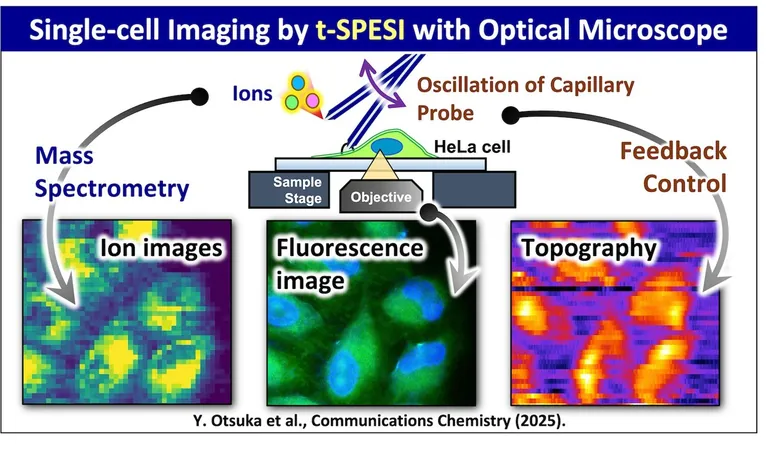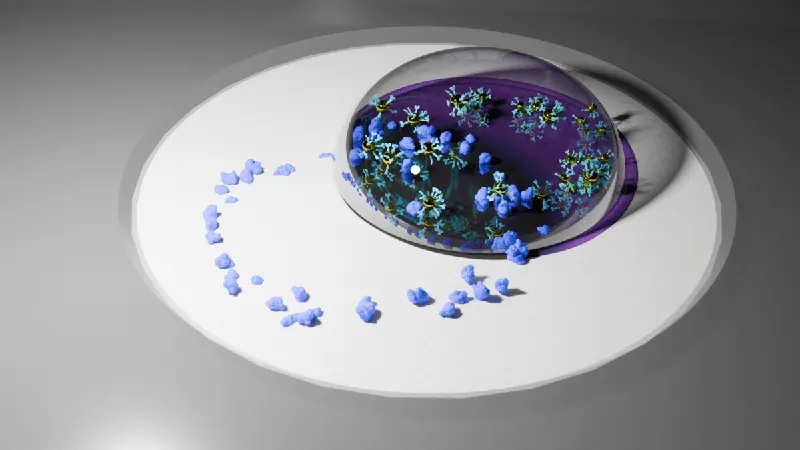
Revolutionary Imaging Technique Unlocks Hidden Secrets of Individual Cells!
2025-05-14
Author: Nur
Tissues are intricate puzzles made up of various cell types, making it hard to decode their unique biological roles and how diseases manifest. But what if we could finally see what’s happening at the cellular level?
A groundbreaking team led by the University of Osaka has ushered in a new era of cellular analysis with an innovative imaging technology that promises to illuminate the chemical landscape of individual cells—a major leap towards understanding intricate diseases.
Published in the journal Communications Chemistry, this cutting-edge tool is known as t-SPESI (tapping-mode scanning probe electrospray ionization). This technique brilliantly maps out the spatial arrangement of molecules within a sample, focusing specifically on the remarkable details of single cells.
"Our new t-SPESI unit allows us to visualize samples through multiple modes," reveals lead researcher Yoichi Otsuka. "Not only can we monitor the sampling process in real-time, but we also gain insights while the micro-samples are being prepared for analysis using mass spectrometry."
This advanced technology integrates seamlessly with an inverted fluorescence microscope. This setup enables researchers to observe the sampling in action while also imaging the cells themselves. The variety of imaging modes provides the ability to identify fluorescently tagged molecules, analyze surface features of cells, and pinpoint the chemical components therein.
Why does this matter? The technique can unveil the distribution of intracellular lipids—fatty compounds pivotal to metabolism. Abnormal lipid distributions are often linked to various diseases, making this technology crucial for medical advancements.
Upon applying their method to model cells, the researchers successfully visualized lipids within individual cells using mass spectrometry imaging. They could also observe the cell shapes and differentiate between various cell types based on their unique compositions.
"This enables us to grasp the multidimensional molecular information of individual cells within diseased tissue samples," Otsuka emphasizes. This pioneering research is set to transform how we understand disease development in complex biological environments.
The implications are vast: this technological breakthrough will propel us toward better therapies and diagnostic methods for a plethora of diseases by unraveling the complex interactions among diverse cells found in tissue samples.
Stay tuned as we witness the incredible potential of this tech reshape our approach to cellular biology and medical diagnostics!



 Brasil (PT)
Brasil (PT)
 Canada (EN)
Canada (EN)
 Chile (ES)
Chile (ES)
 Česko (CS)
Česko (CS)
 대한민국 (KO)
대한민국 (KO)
 España (ES)
España (ES)
 France (FR)
France (FR)
 Hong Kong (EN)
Hong Kong (EN)
 Italia (IT)
Italia (IT)
 日本 (JA)
日本 (JA)
 Magyarország (HU)
Magyarország (HU)
 Norge (NO)
Norge (NO)
 Polska (PL)
Polska (PL)
 Schweiz (DE)
Schweiz (DE)
 Singapore (EN)
Singapore (EN)
 Sverige (SV)
Sverige (SV)
 Suomi (FI)
Suomi (FI)
 Türkiye (TR)
Türkiye (TR)
 الإمارات العربية المتحدة (AR)
الإمارات العربية المتحدة (AR)